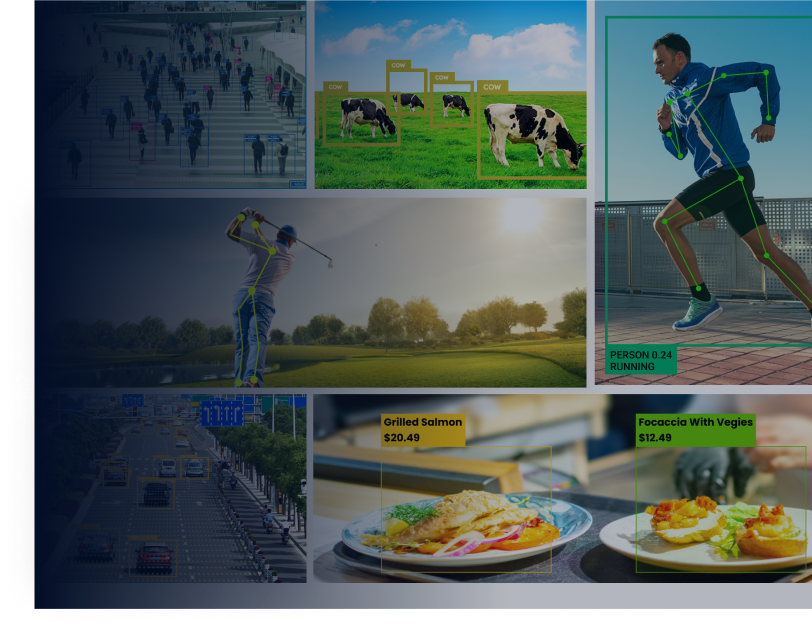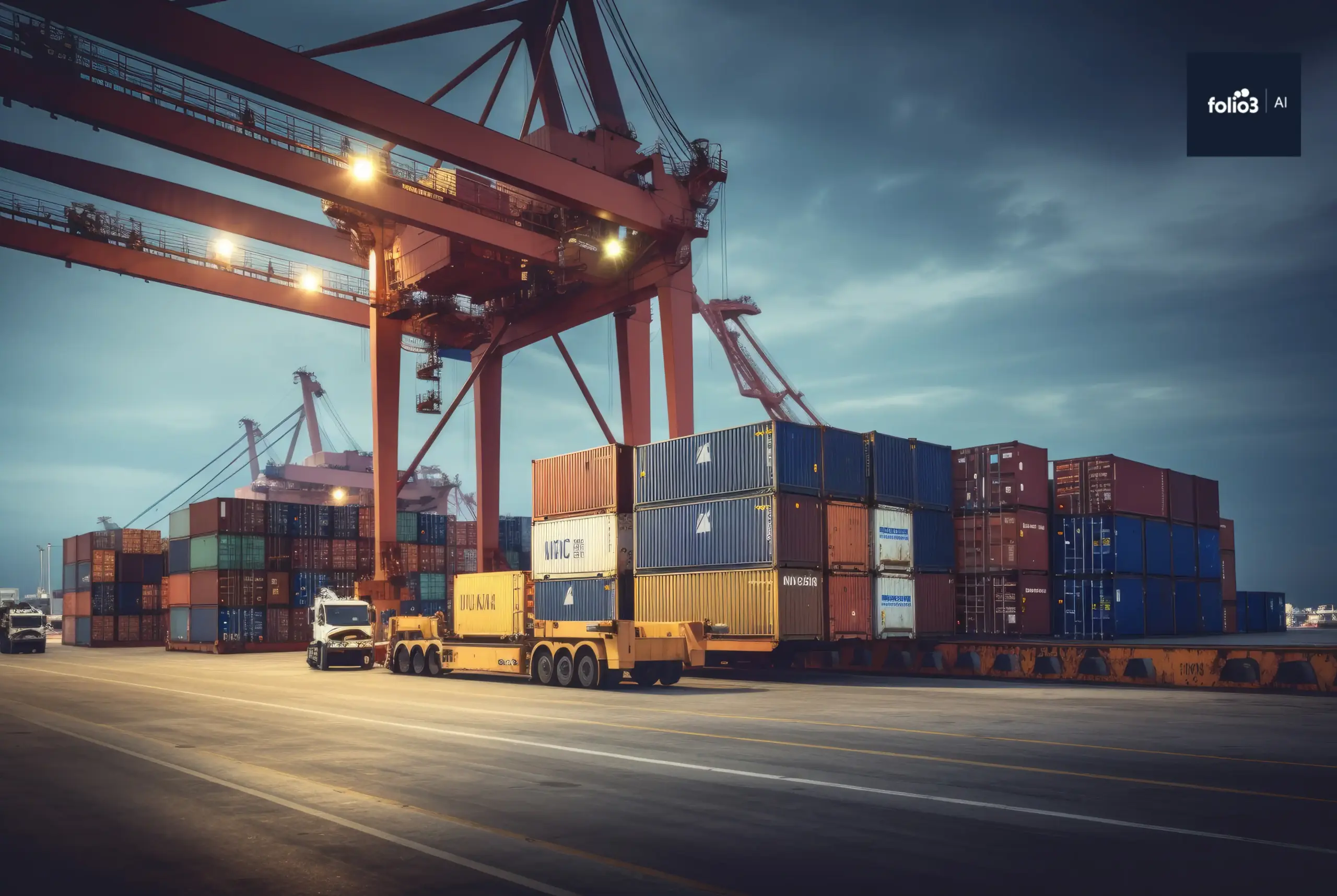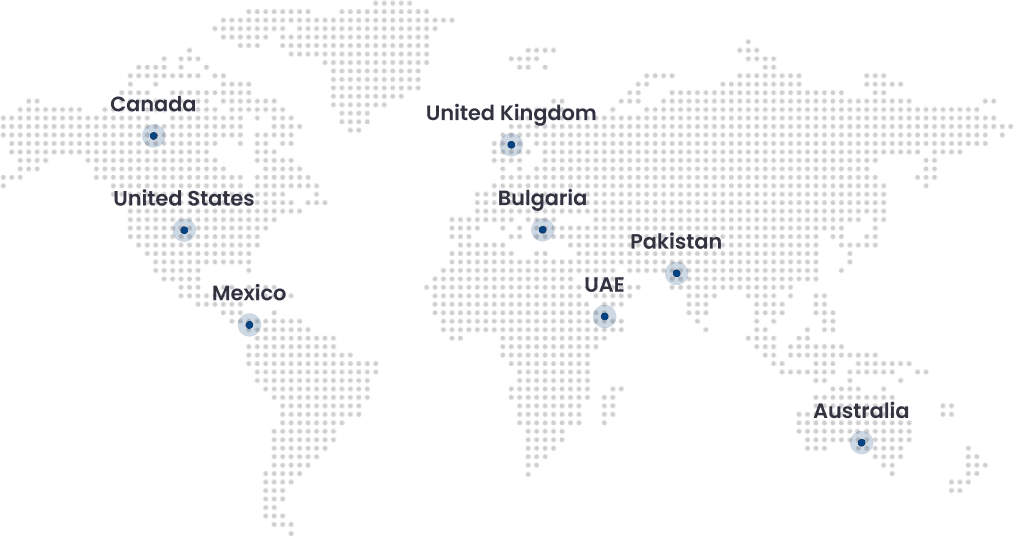The transportation industry is experiencing an exciting transformation in 2025. Technology is redefining how we move people and goods, creating fresh opportunities for companies ready to embrace change.
Electric vehicles are becoming mainstream, artificial intelligence is making trucks smarter, and cities are using data to smooth traffic flow.
What makes this transformation particularly compelling is how quickly these changes are happening.
Just five years ago, fully autonomous delivery trucks seemed like distant possibilities. Today, they’re rolling through test routes and preparing for commercial deployment.
Transportation industry trends in 2025 are creating practical solutions that boost efficiency while cutting costs. This isn’t happening in some far-off future – it’s working right now in cities around the world.
Let’s get started by exploring the top 5 transportation industry trends.
Trend #1: Autonomous Mobility Is Getting Smarter

Self-driving vehicles are moving beyond experimental phases and becoming practical tools that companies can actually use to solve everyday transportation challenges, powered by AI systems that get better with every mile driven.
How Autonomous Mobility is Transforming Transportation:
- Smart perception systems combine cameras, sensors, and AI to see everything around vehicles in real-time, helping trucks and delivery robots make split-second decisions just like experienced human drivers would
- Intelligent route planning uses live traffic data, weather updates, and road conditions to find the best paths automatically, ensuring deliveries arrive on time while avoiding congested areas
- Fleet coordination technology allows multiple self-driving vehicles to work together like a team, sharing information about traffic and road conditions to keep everyone moving efficiently
- Automated delivery solutions are making last-mile delivery faster and cheaper through robots that can walk on sidewalks and drones that fly directly to customers’ doors
- Predictive maintenance features use machine learning to spot potential problems before vehicles break down, keeping fleets running smoothly and reducing unexpected repair costs
Companies like Waymo and Tesla are leading this revolution, with autonomous driving expected to create $300-400 billion in new revenue by 2035.
The technology is becoming so reliable that self-driving systems are already proving safer than human drivers in many situations.
Trend #2: Smart Infrastructure and AI-Powered Traffic Management
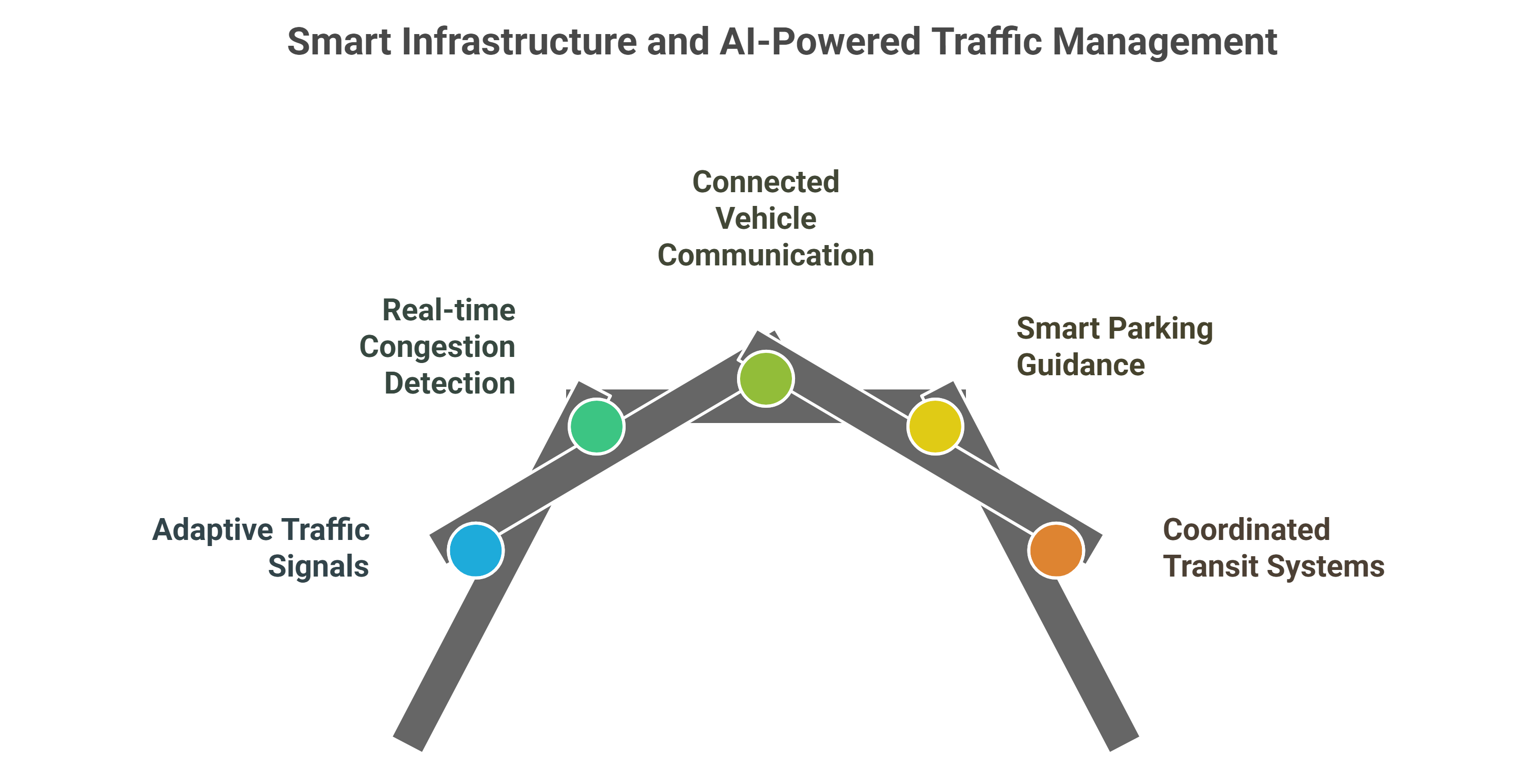
Cities are installing intelligent systems that use sensors, cameras, and AI to make traffic lights smarter, parking easier to find, and commutes faster for everyone who uses the roads.
How Smart Infrastructure is Making Transportation Better?
- Adaptive traffic signals analyze how many cars are coming from each direction and adjust timing automatically, reducing wait times and keeping traffic moving smoothly throughout the day
- Real-time congestion detection uses computer vision to spot traffic buildups instantly, sending alerts to drivers and suggesting alternate routes before small problems become major jams
- Connected vehicle communication lets cars talk directly to traffic lights and road sensors, receiving updates about optimal speeds and route recommendations for the most efficient journeys
- Smart parking guidance uses sensors to track available spaces and direct drivers to open spots quickly, eliminating the frustrating search for parking that creates unnecessary traffic
- Coordinated transit systems synchronize buses, trains, and bike-sharing programs using AI to ensure smooth connections between different transportation options
Cities using these smart systems are seeing remarkable results – traffic delays are dropping by 20-30%, and emergency vehicles can reach destinations much faster.
Trend #3: Electrification & Green Logistics
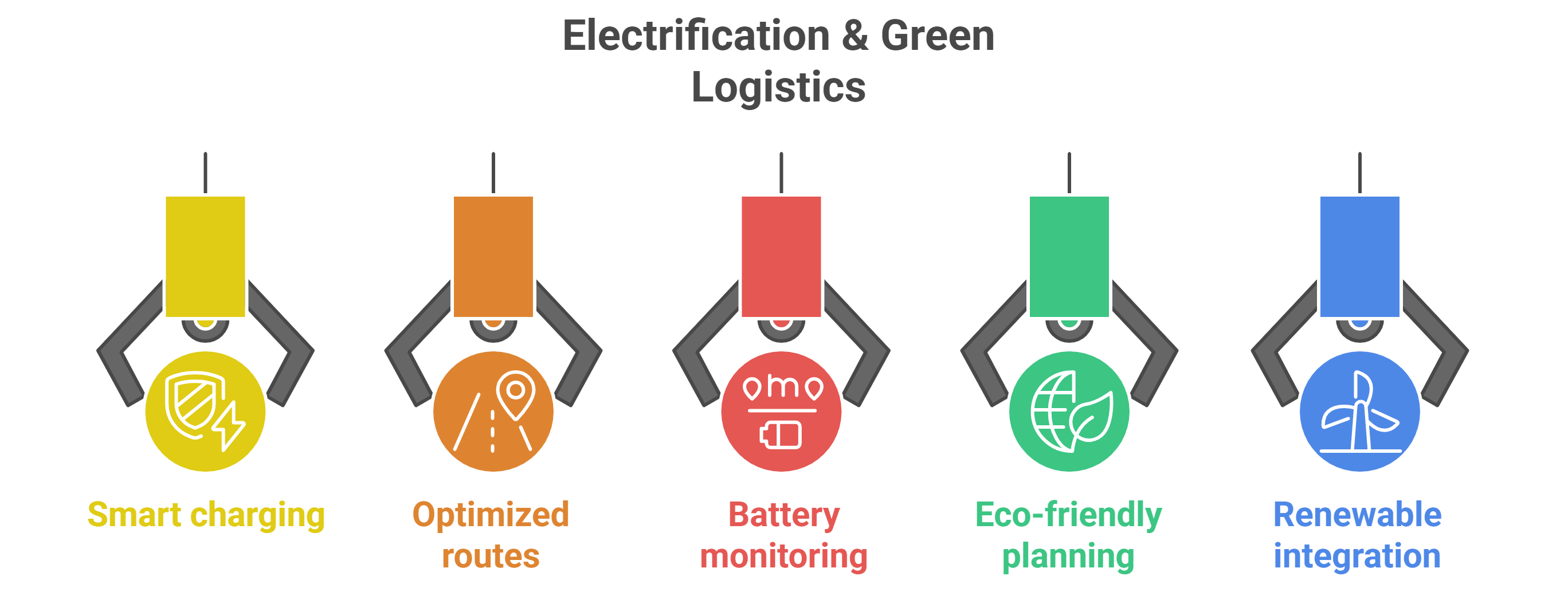
Electric vehicles are becoming the preferred choice for companies looking to save money on fuel while meeting environmental goals, supported by AI systems that make electric fleets more reliable and efficient than traditional vehicles.
How Electrification is Improving Transportation:
- Smart charging networks use AI to manage when and where vehicles charge, ensuring fleets always have enough power while keeping electricity costs low and reducing strain on the power grid
- Optimized electric routes consider battery levels, charging station locations, and delivery schedules to plan the most efficient paths, eliminating range anxiety and maximizing productivity
- Battery health monitoring tracks how batteries perform over time and predicts when they need maintenance, helping electric vehicles last longer and perform better throughout their lifespan
- Eco-friendly logistics planning uses algorithms to find the most environmentally friendly ways to transport goods, helping companies reduce their carbon footprint while saving money
- Renewable energy integration coordinates electric vehicle charging with solar and wind power availability, creating transportation systems that run on clean energy
The electric vehicle market is growing rapidly, projected to reach $1.3 trillion by 2032, with AI helping overcome traditional concerns about electric vehicle performance and reliability.
Trend #4: Predictive & Preventive Fleet Management
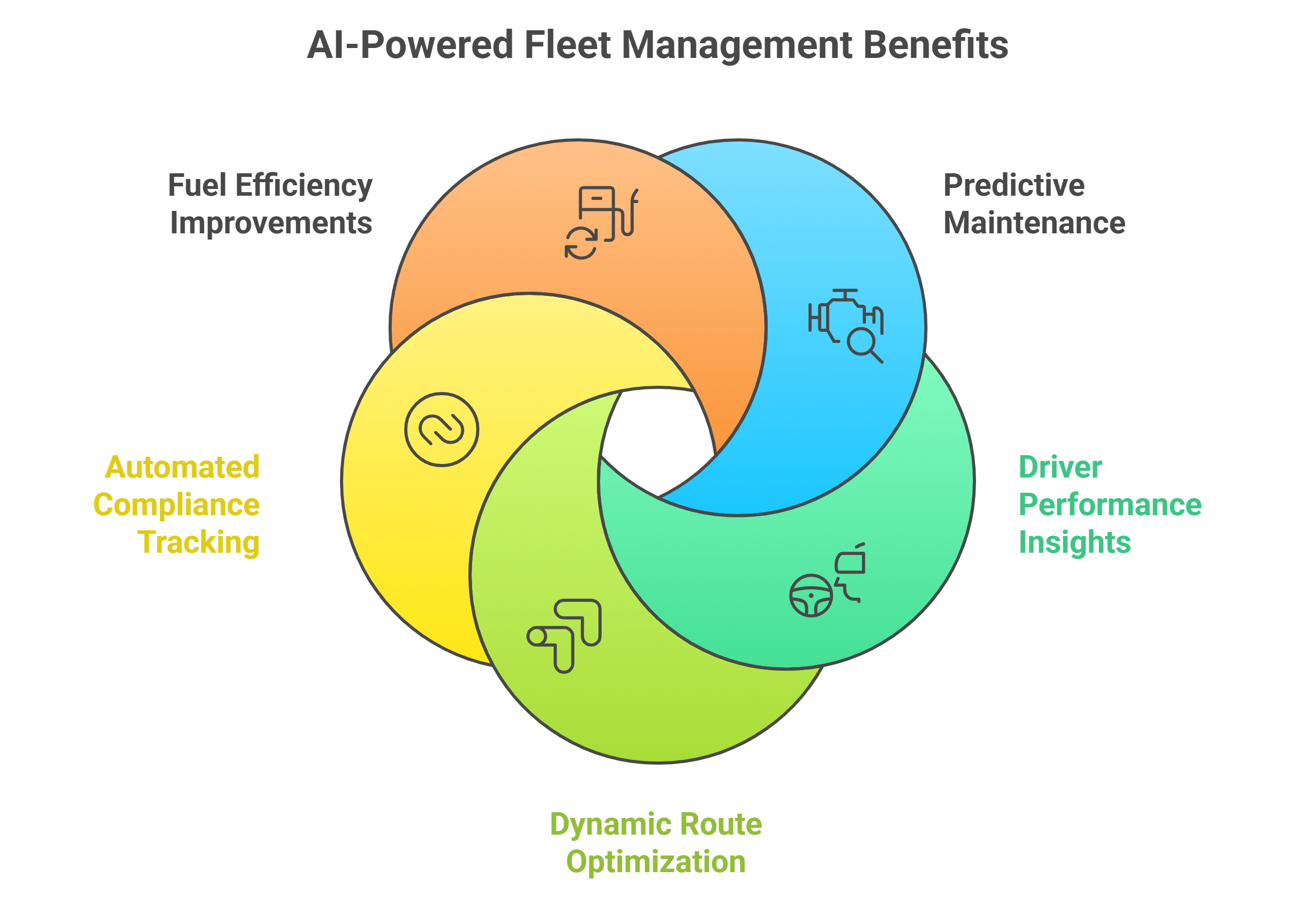
Advanced analytics are helping transportation companies keep their vehicles running smoothly by predicting when maintenance is needed and optimizing fleet management by defining how drivers operate their routes for maximum efficiency and safety
AI-powered Fleet Management Benefits:
- Predictive maintenance technology analyzes engine performance, tire condition, and other vehicle systems to schedule repairs before breakdowns happen, reducing unexpected downtime by up to 50%
- Driver performance insights monitor driving habits and provide personalized coaching to help drivers improve fuel efficiency, reduce wear and tear, and stay safer on the road
- Dynamic route optimization considers current traffic, weather conditions, and delivery windows to find the best routes in real-time, saving fuel and ensuring on-time deliveries
- Automated compliance tracking monitors driver hours, vehicle inspections, and safety requirements automatically, making it easier to meet regulations without extra paperwork
- Fuel efficiency improvements use machine learning to identify opportunities for better fuel consumption, with many fleets seeing reductions of 15-25% in their fuel costs
Trend #5: Seamless, Personalized Passenger Experience
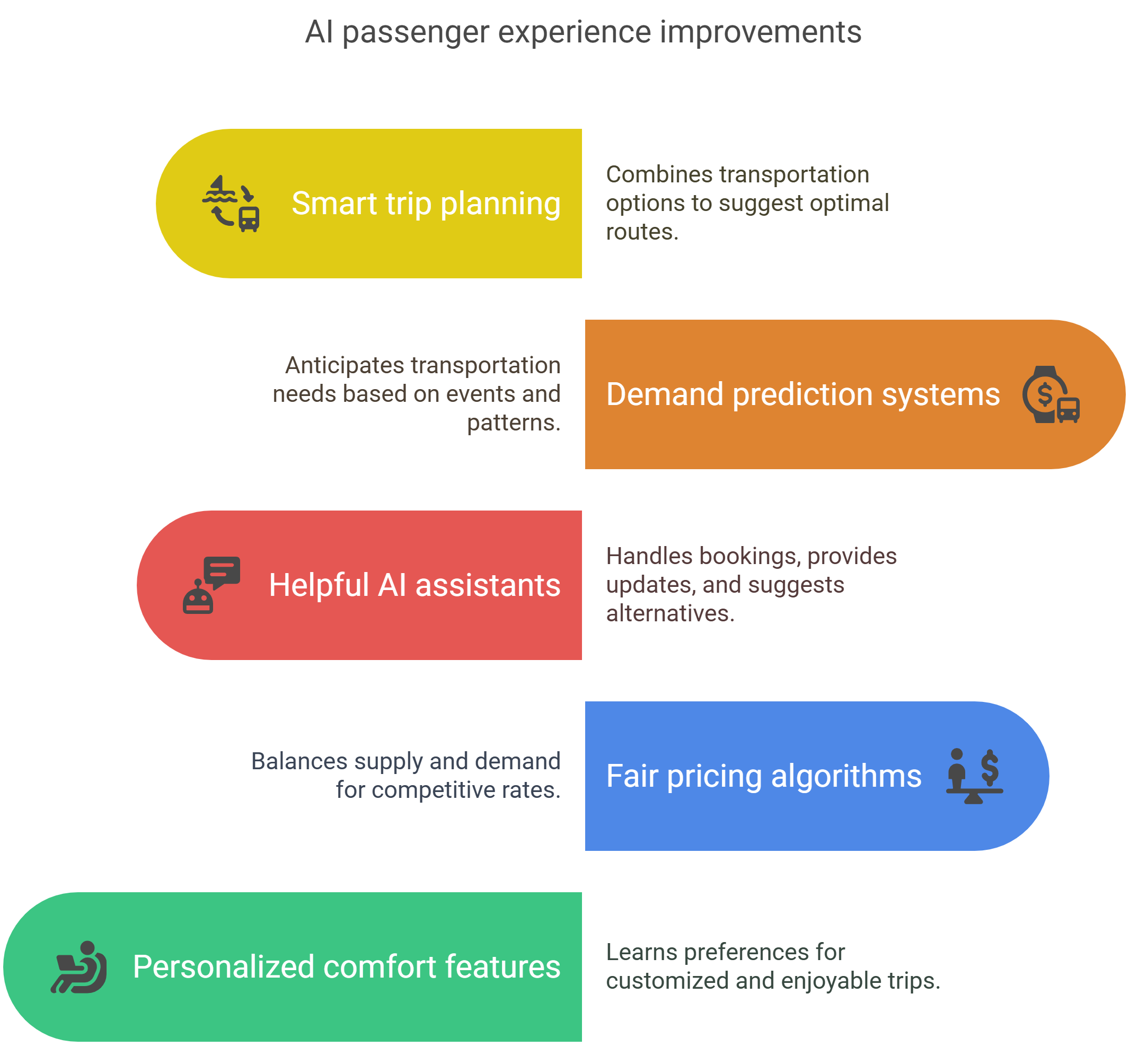
Artificial intelligence is creating transportation experiences that adapt to what each person wants, predicting travel needs, and connecting different transportation options into smooth, convenient journeys.
How AI-driven Passenger Experience Improvements?
- Smart trip planning combines buses, trains, ride-sharing, and walking to suggest the fastest, cheapest, or most environmentally friendly ways to get where you’re going
- Demand prediction systems anticipate when and where people will need transportation based on events, weather, and historical patterns, ensuring vehicles are ready when and where they’re needed
- Helpful AI assistants built into transportation apps handle bookings, provide real-time updates, answer questions, and suggest alternatives when travel plans change
- Fair pricing algorithms use machine learning to balance supply and demand, offering competitive rates while ensuring transportation providers can maintain good service
- Personalized comfort features learn individual preferences for routes, temperature, and services, creating customized experiences that make every trip more enjoyable
Case Study: AI-Powered Fleet Management Transformation
Real-world examples show how AI transforms transportation operations across different industries, delivering measurable improvements in efficiency, cost savings, and operational performance for companies.
Logistics and Transportation Solutions: A leading logistics company implemented Folio3’s AI-powered fleet management system to optimize delivery routes, manage driver schedules, and ensure timely deliveries.
The solution included real-time GPS tracking and AI-powered route optimization, which improved operational efficiency and reduced fuel consumption while maintaining compliance with industry regulations.
Construction and Heavy Equipment Monitoring For construction companies managing high-value assets like trucks and heavy machinery, Folio3’s fleet asset management solutions help prevent equipment downtime and optimize resource allocation on job sites.
The system monitors location, utilization, and maintenance needs, ensuring maximum productivity and reducing costly delays.
Data-Driven Transformation: The Role of AI in 2025 and Beyond
Artificial intelligence connects all these transportation trends together, creating systems where vehicles, roads, and management platforms work as a team to make transportation faster, safer, and more efficient.
The foundation of this transformation rests on several key technologies working together.
Core AI Technologies Enabling Transportation Transformation:
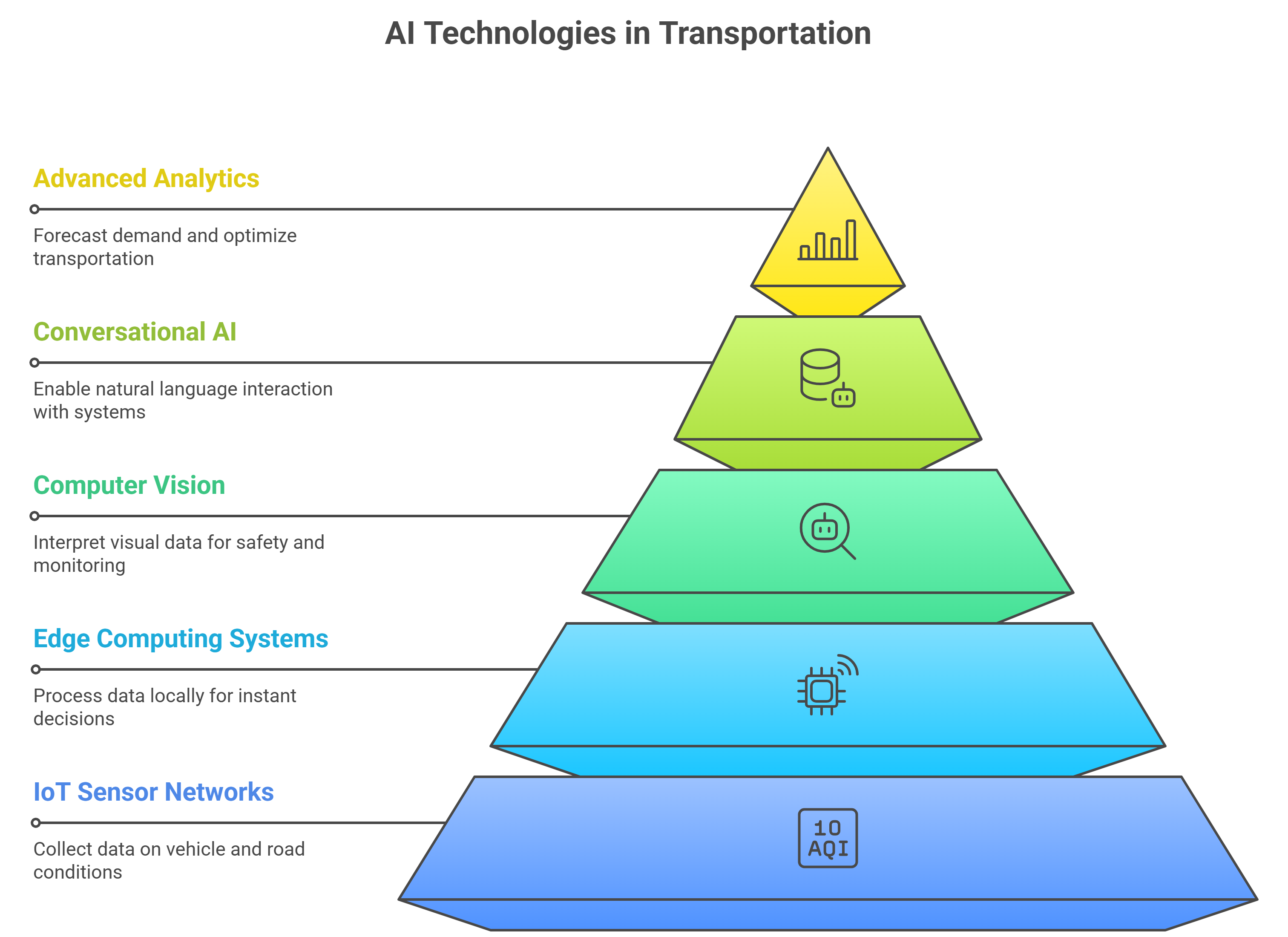
- Edge computing systems process critical transportation data locally, enabling instant decision-making for autonomous vehicles and real-time traffic management without depending on internet connections
- Computer vision technology interprets visual information from cameras and sensors to monitor traffic flow, detect accidents, find parking spaces, and ensure safety across transportation networks
- Conversational AI platforms power natural language interfaces that let passengers and fleet managers interact easily with transportation systems, booking rides and getting personalized recommendations
- IoT sensor networks collect detailed information about vehicle performance, road conditions, passenger behavior, and infrastructure health, feeding AI systems with data needed for continuous improvement
- Advanced analytics platforms combine historical information with real-time data to forecast demand, predict maintenance needs, optimize pricing, and anticipate transportation opportunities
Companies embracing these AI-driven approaches are positioning themselves for long-term success in an increasingly connected transportation ecosystem.
How Folio3 Can Help Transform Transportation with AI
Folio3 specializes in creating custom AI solutions that transform transportation operations through intelligent traffic monitoring, predictive analytics, and automated decision-making systems tailored to your specific needs.
Our Transportation AI Solutions deliver:
- Real-time traffic intelligence systems that detect, classify, and track vehicles instantly using computer vision technology, helping cities and companies monitor traffic flow, reduce congestion, and respond to incidents faster
- Custom predictive analytics platforms built specifically for your fleet operations, analyzing vehicle performance, driver behavior, and maintenance patterns to reduce costs and improve efficiency across your transportation network
- Intelligent route optimization engines that process live traffic data, weather conditions, and delivery schedules to create dynamic routing solutions that save fuel, reduce delivery times, and improve customer satisfaction
- Smart infrastructure integration connecting your vehicles, sensors, and management systems through AI-powered platforms that enable seamless communication and automated decision-making across your entire transportation ecosystem
- Advanced safety monitoring solutions using machine learning to analyze driver behavior, vehicle conditions, and road environments in real-time, helping prevent accidents and ensure compliance with safety regulations
With over 15 years of experience and 1000+ enterprise clients, Folio3 has deployed 20+ pre-built AI models across various transportation projects globally, delivering measurable improvements in efficiency, safety, and cost reduction.
Conclusion
The transportation industry in 2025 is experiencing exciting changes that create new opportunities for efficiency, sustainability, and customer satisfaction.
These trends aren’t just about cool technology; they’re solving real problems that transportation companies face every day.
From self-driving vehicles that think like experienced drivers to AI systems that prevent problems before they happen, these innovations are making transportation smarter and more reliable.
Companies that embrace these transportation industry trends today are building the foundation for tomorrow’s success.

Laraib Malik is a passionate content writer specializing in AI, machine learning, and technology sectors. She creates authoritative, entity-based content for various websites, helping businesses develop E-E-A-T compliant materials with AEO and GEO optimization that meet industry standards and achieve maximum visibility across traditional and AI-powered search platforms.

